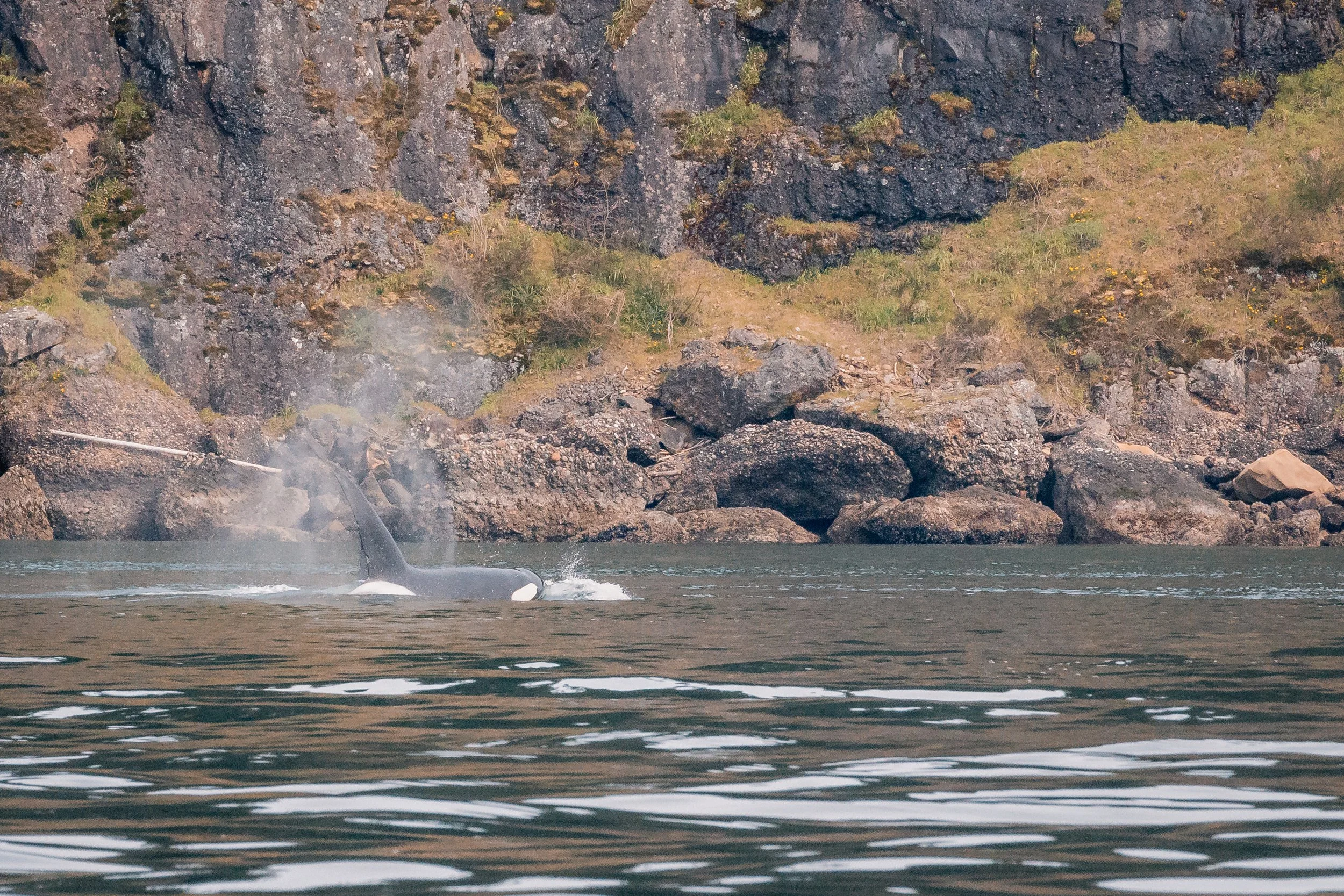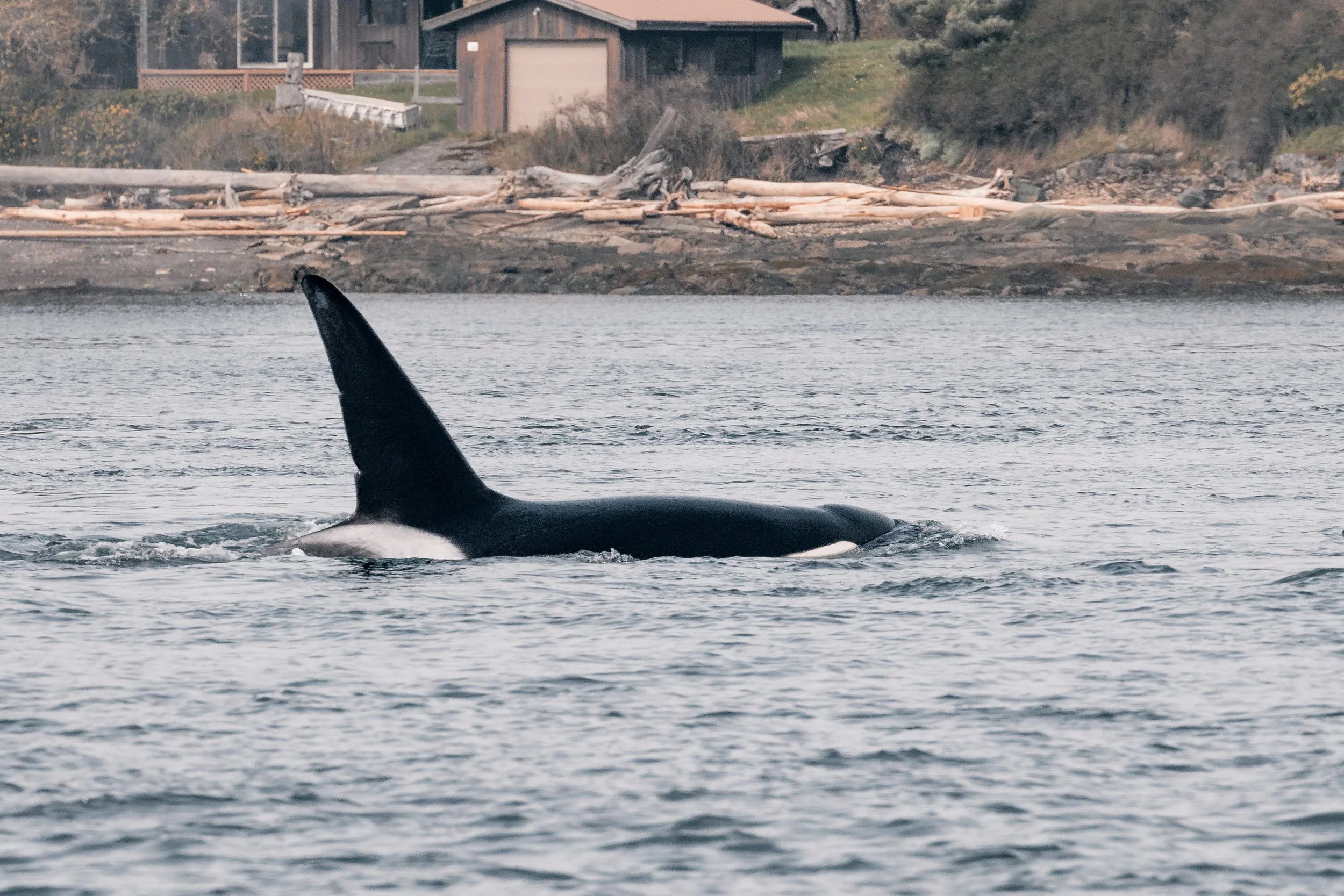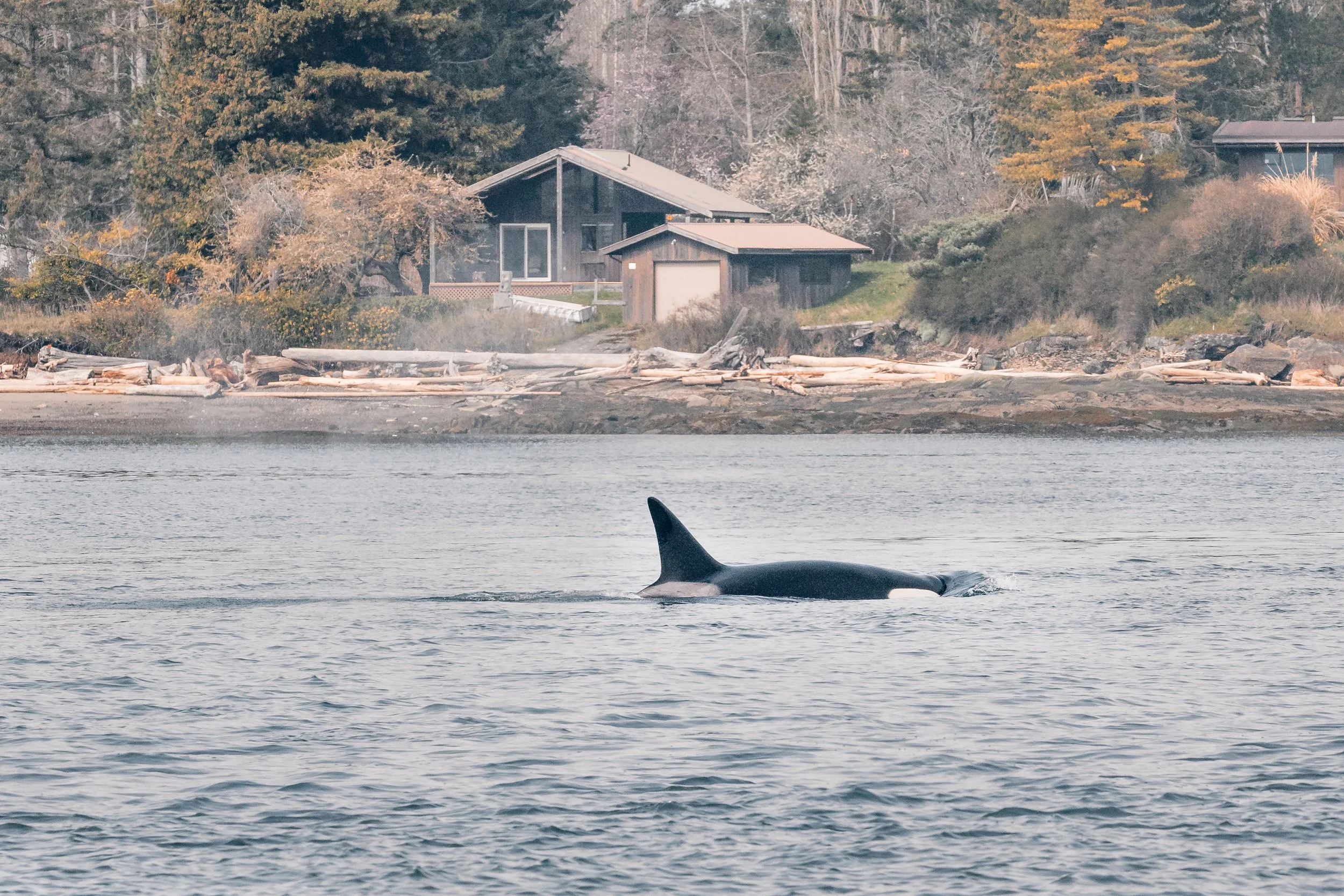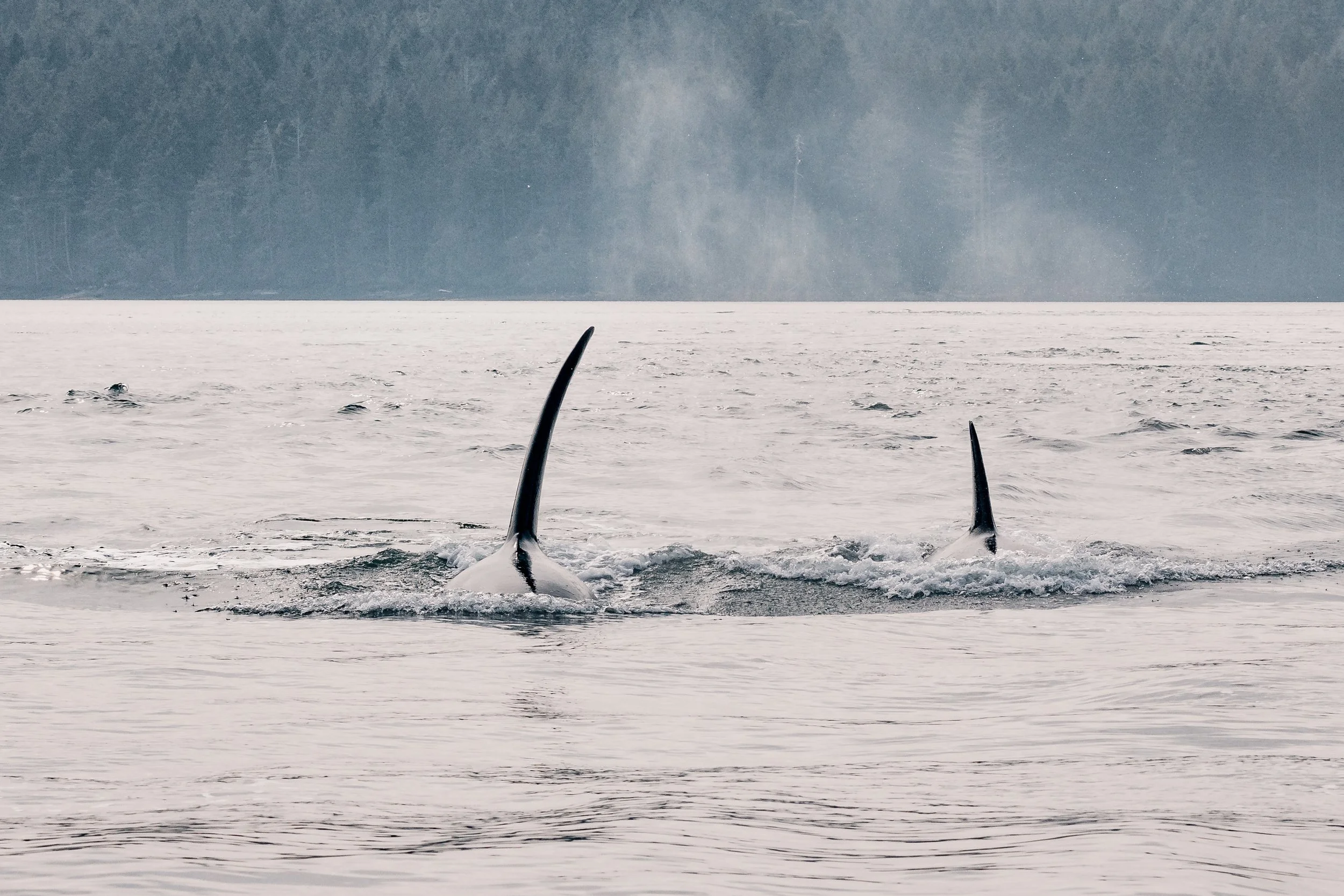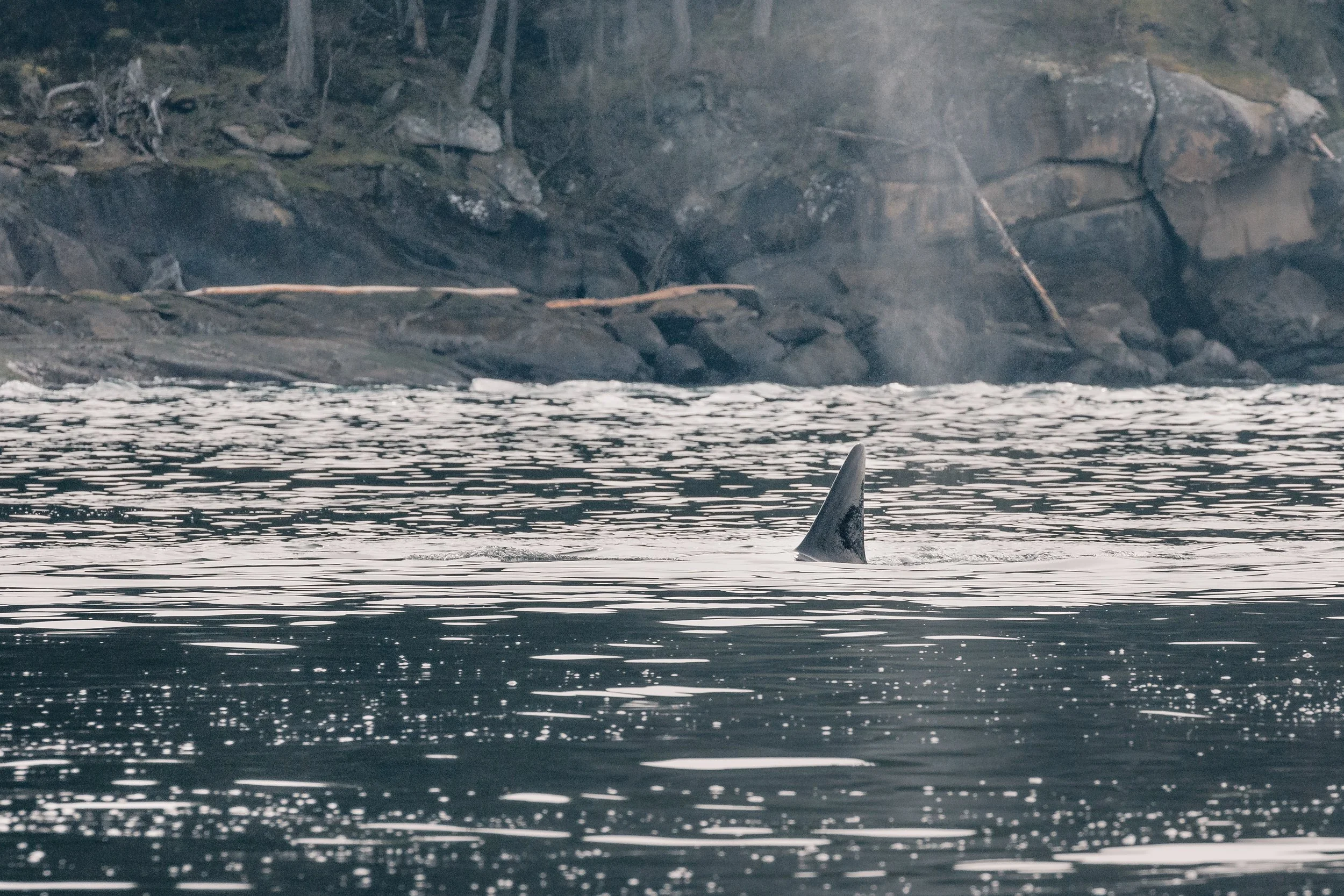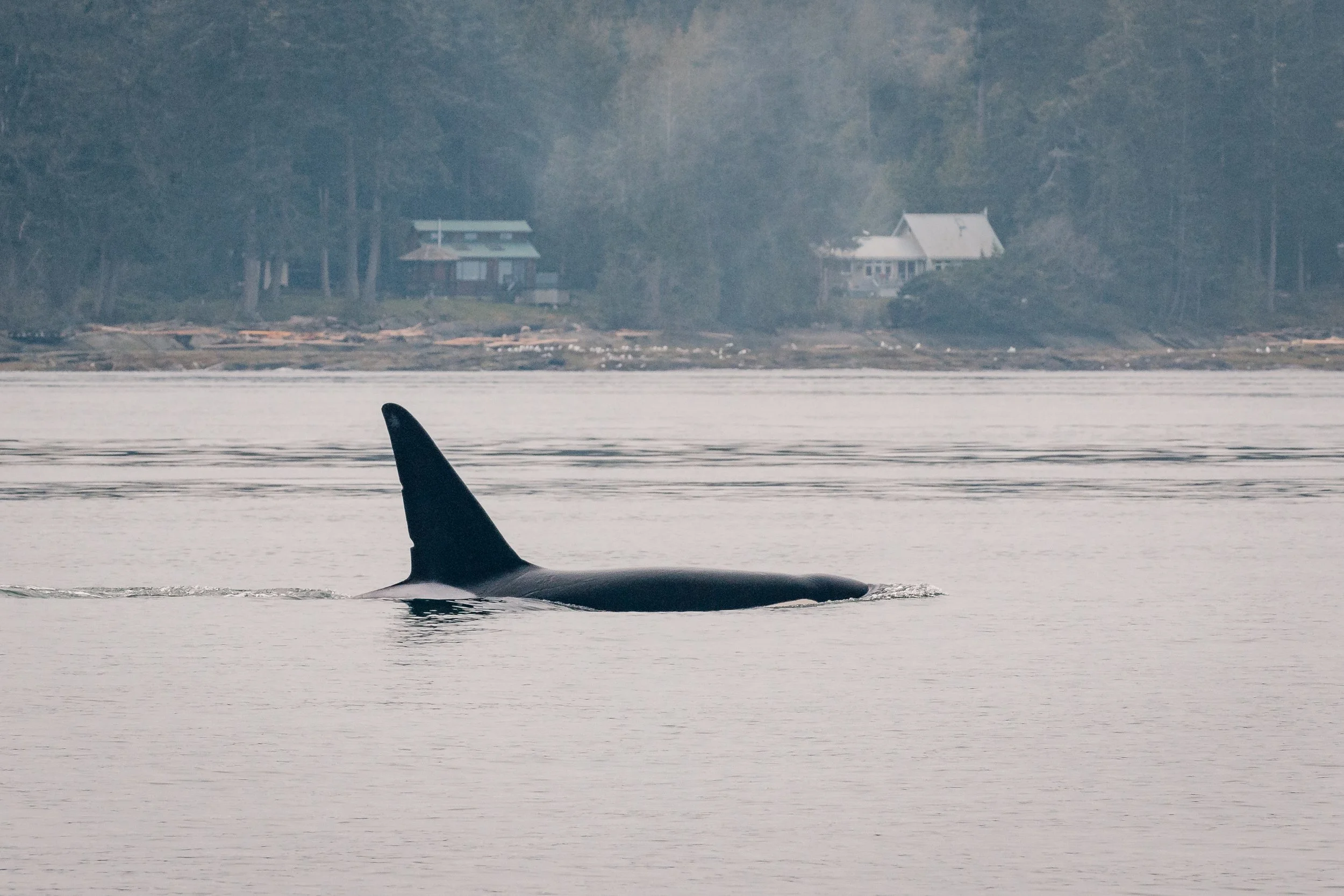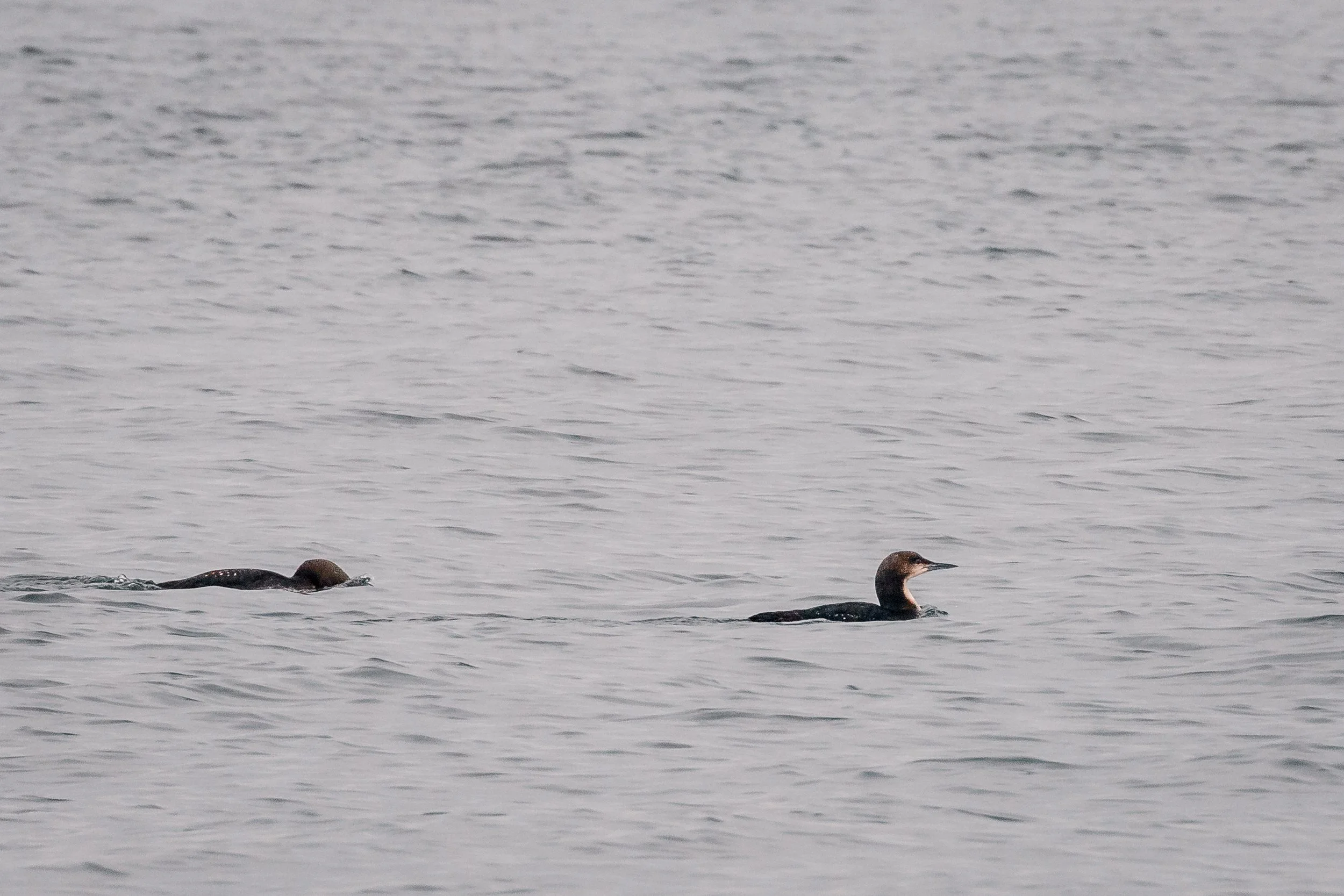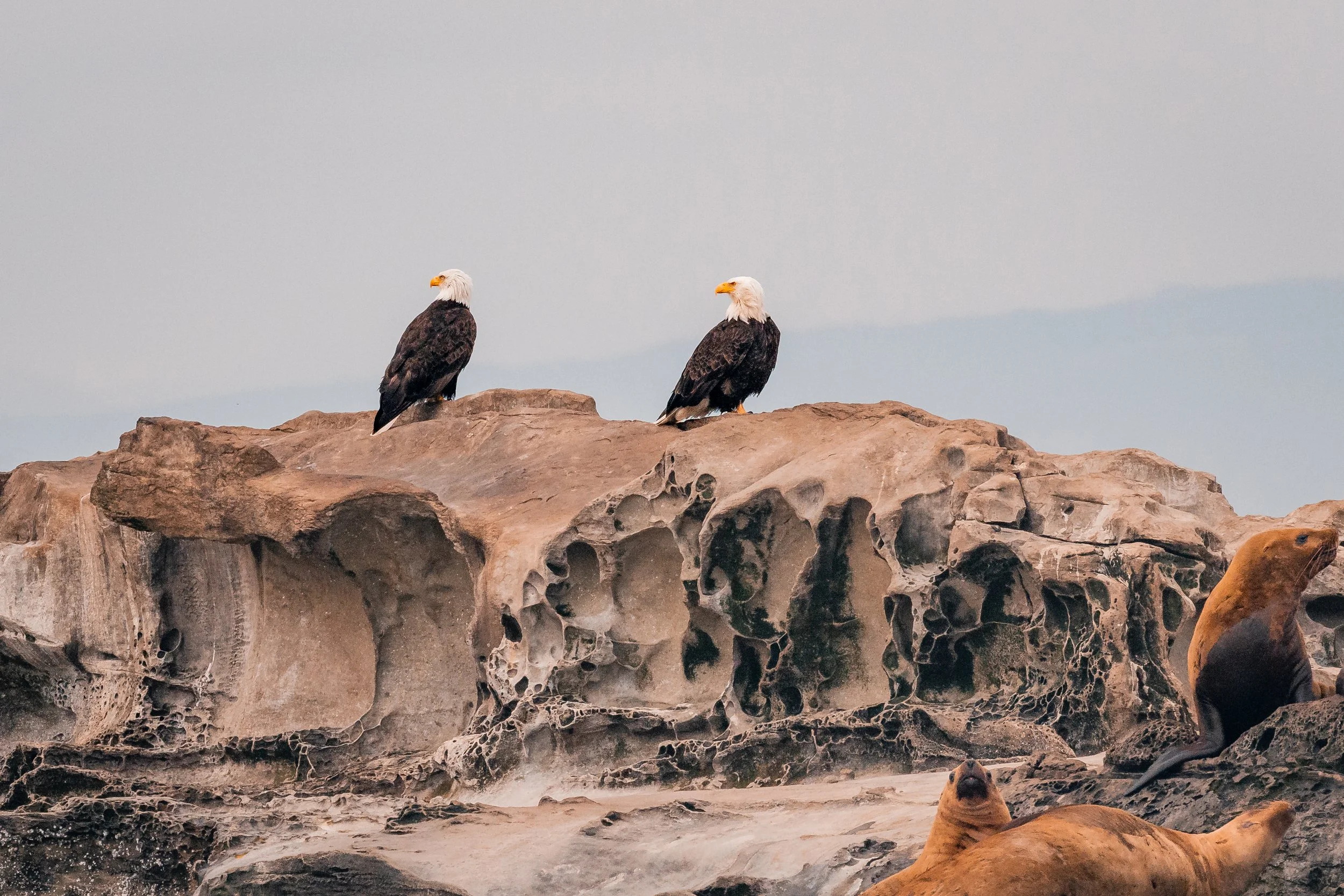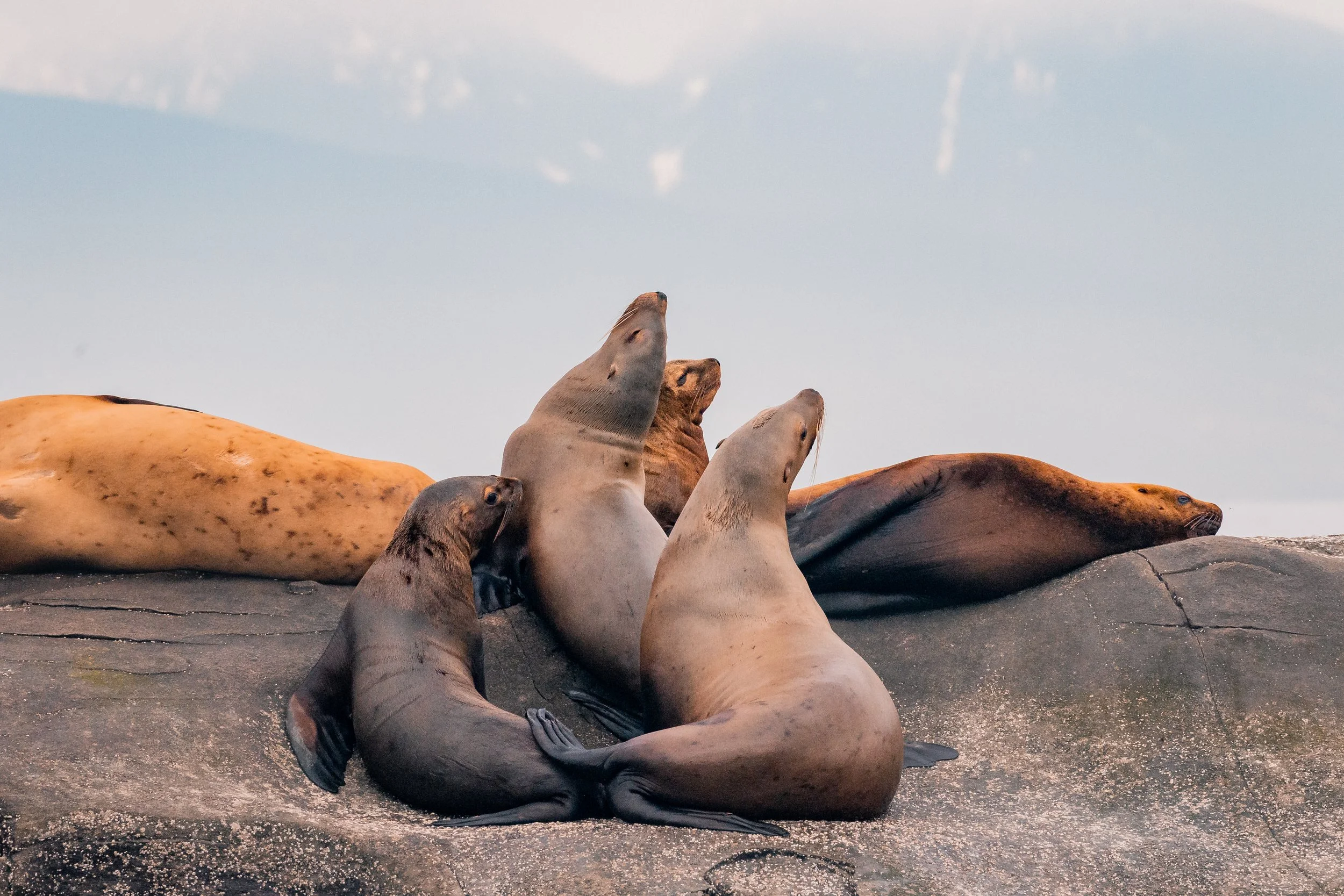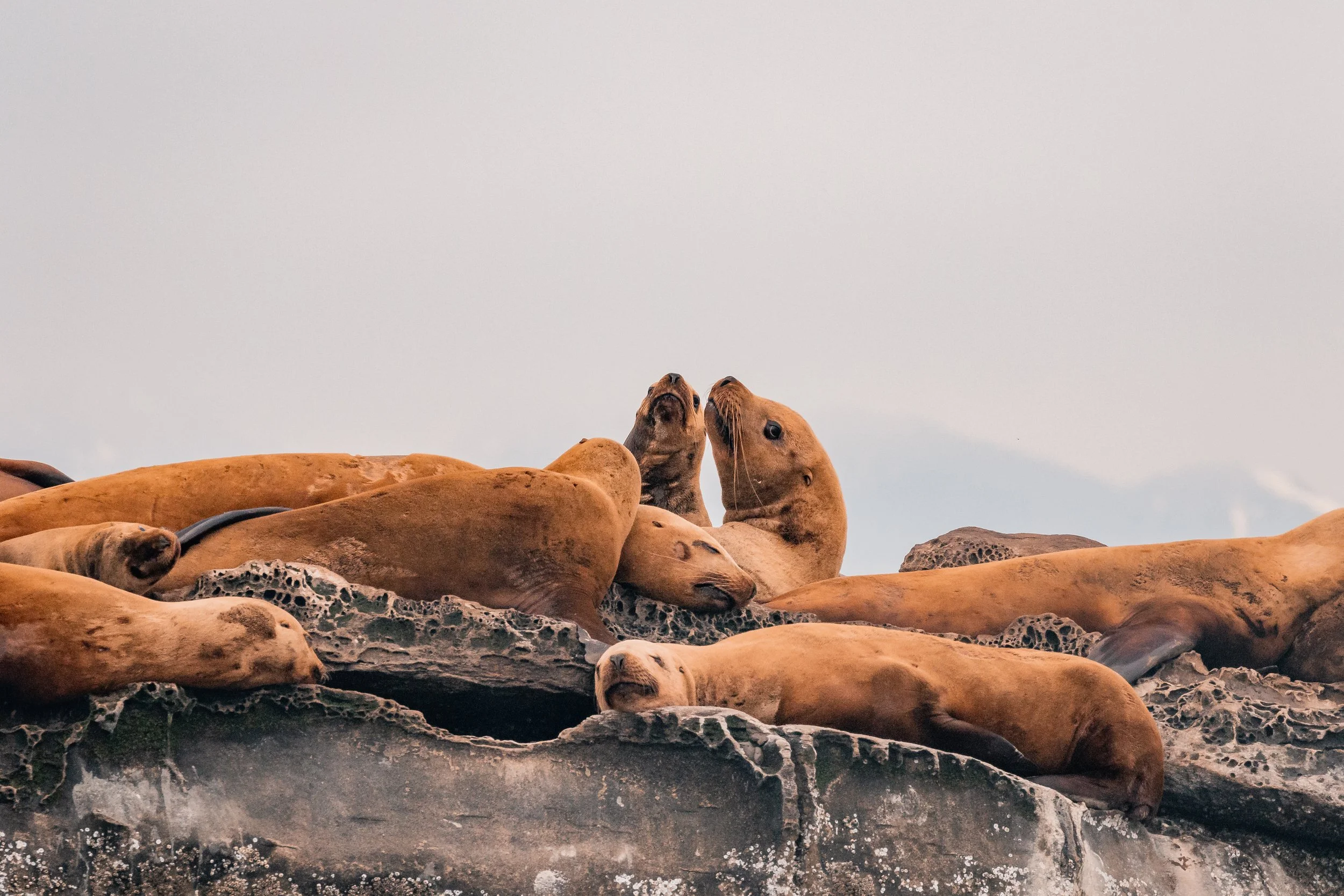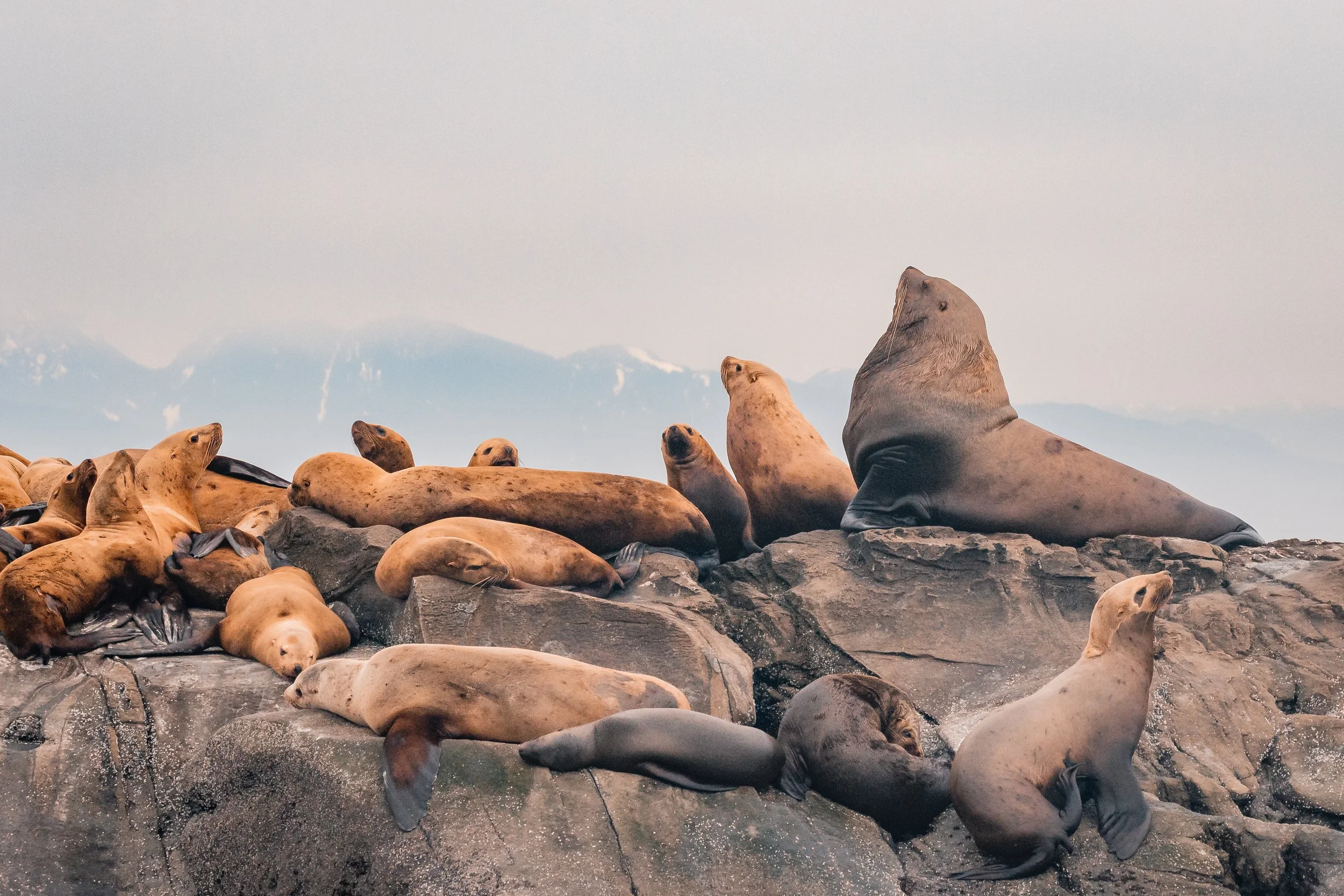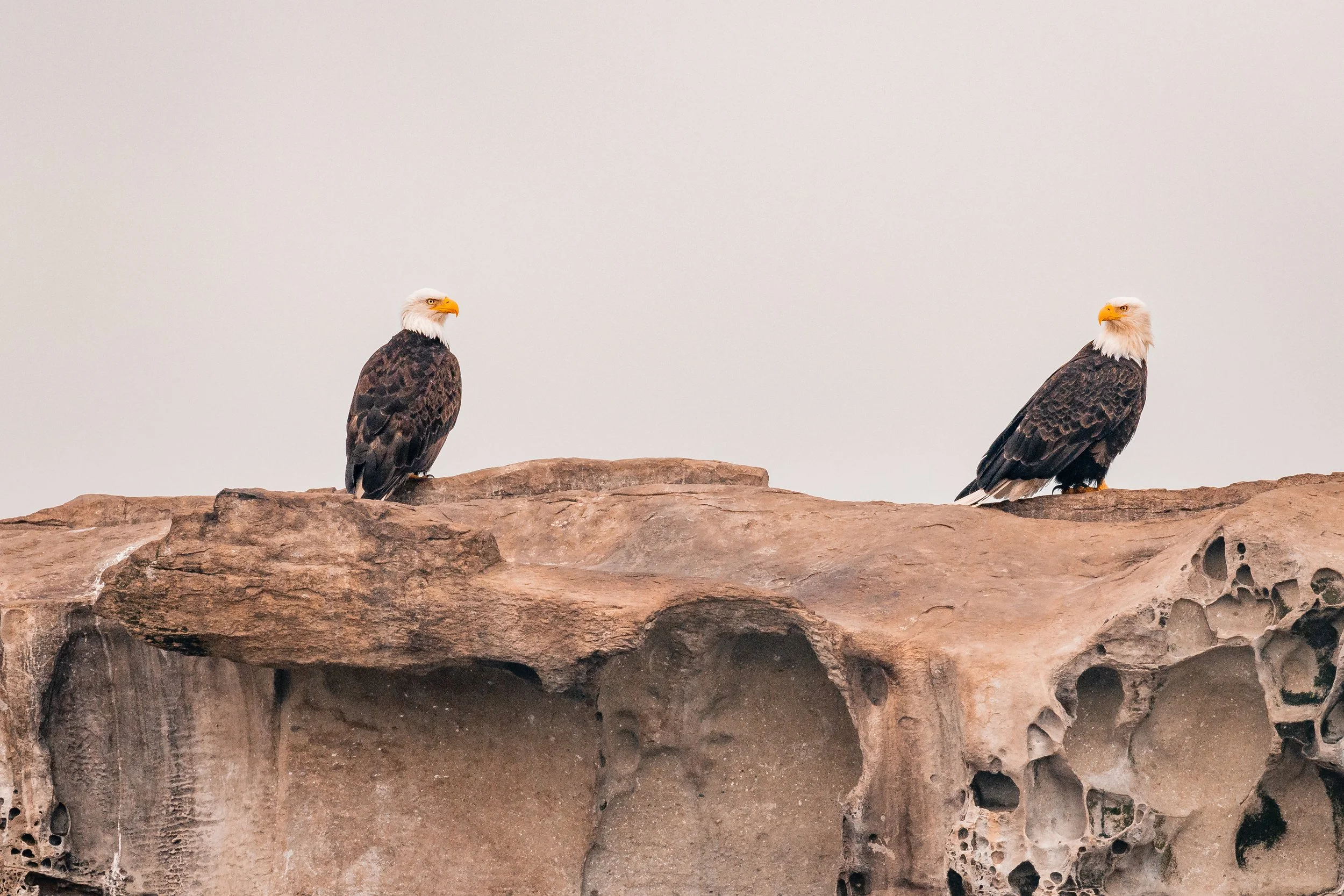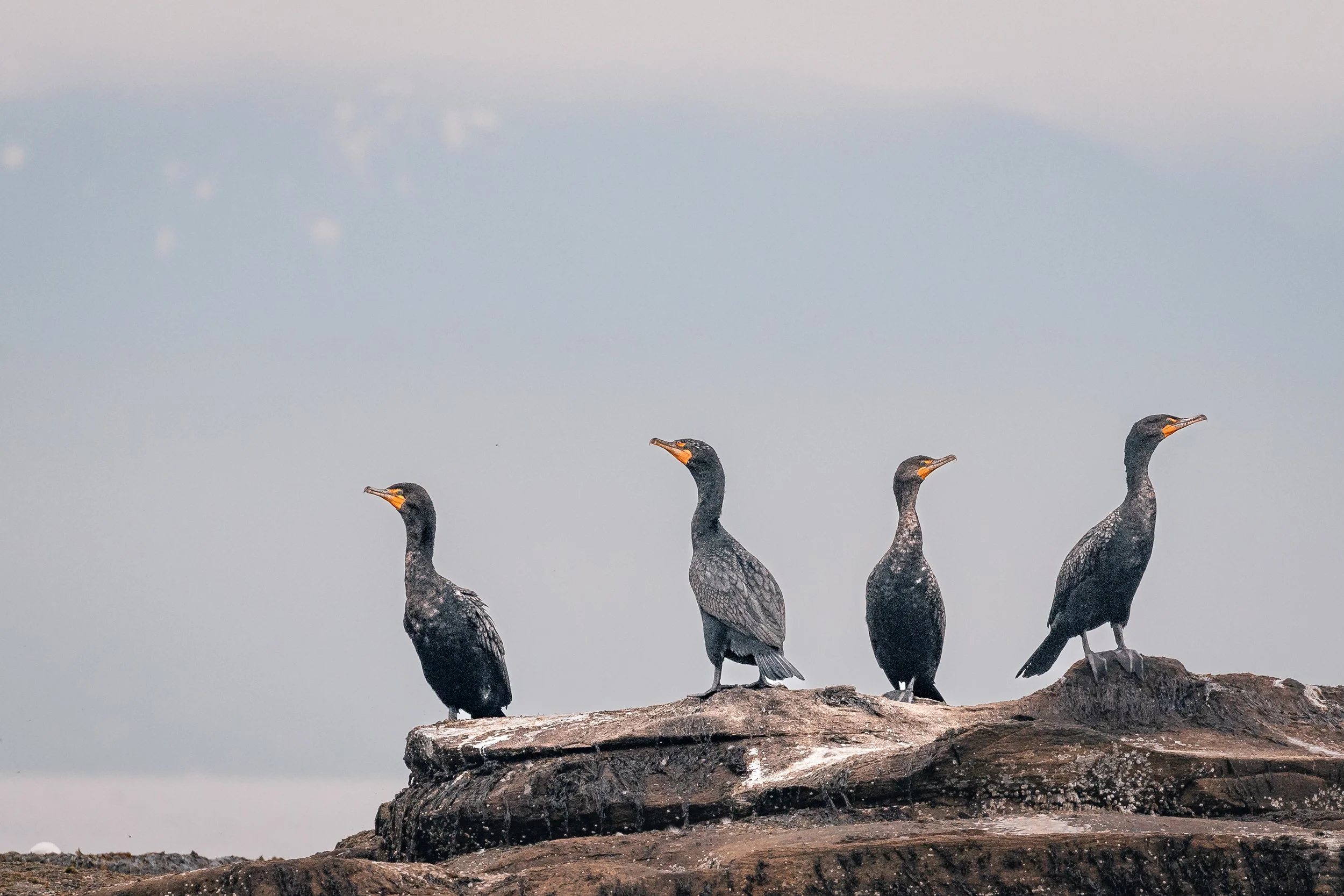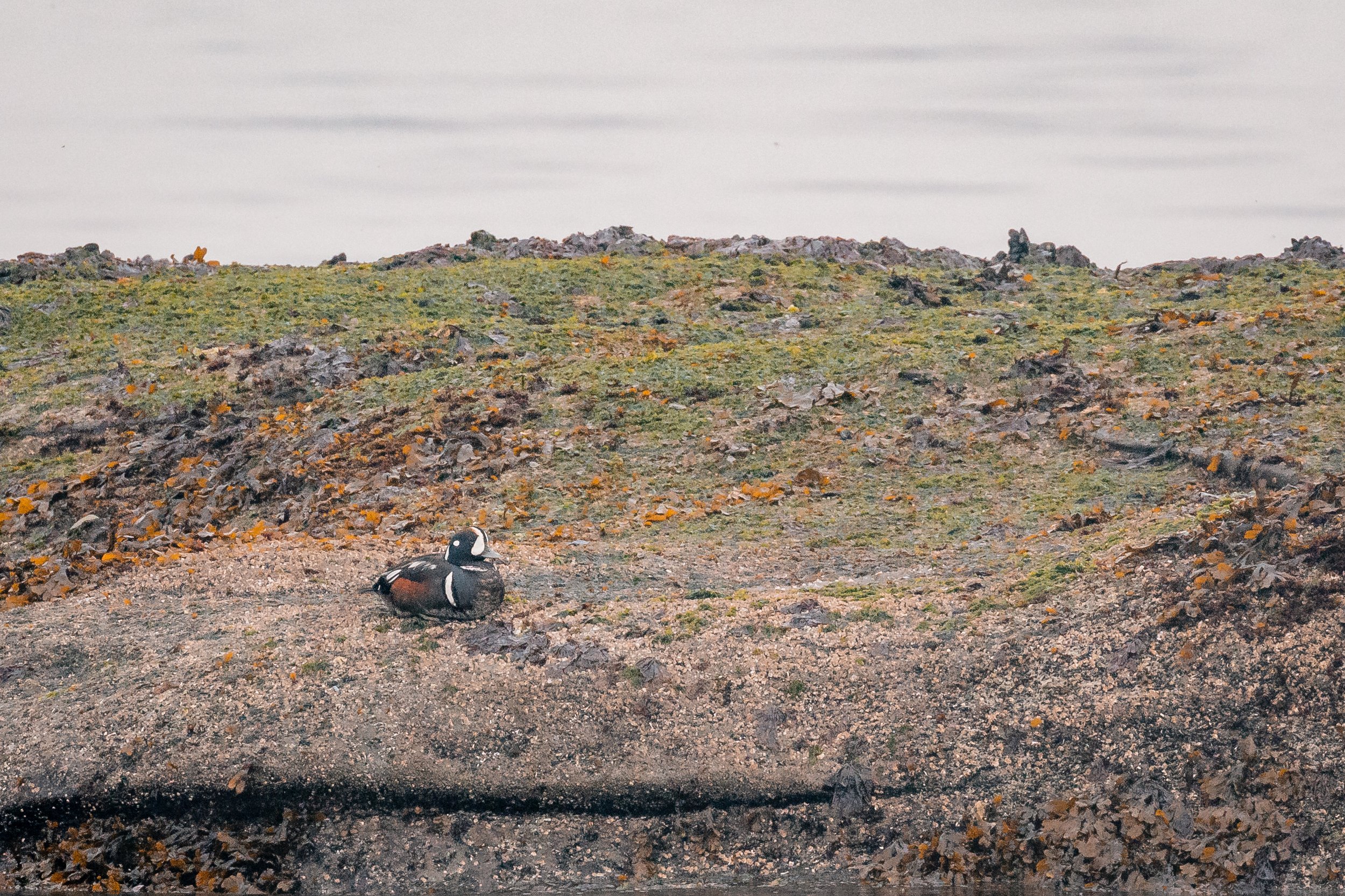March 25th - Orcas in Active Pass
As Kula pulled out of the harbour on March 25th we already knew where we were heading. There had been a report that a group of whales had been spotted in Dinner Bay on Mayne Island. The whales were pointed North into Trincomali Channel. It would take us about an hour to get down to where they were reported, and whales can travel quite far so we knew we were still going to have to search.
When we arrived at the reported sighting there were no whales to be seen, but with some keen eyes we spotted the whales slowly traveling into Active Pass.
Active pass is a very busy area for both wildlife and people, being a main shipping route and a very active ferry route it’s hard to go through Active pass without seeing another large boat. It’s also heavily used by our whales, both Orca and Humpbacks, as well as Seals, Sea Lions, Porpoises, and plenty of marine birds.
As we entered the channel we could see 4 fins playing in the current. After a few photos our Naturalist was fairly sure we were watching Jack, T137A. After a few more they also ID’ed Jack’s younger brother Wright, T137D, confirming we had the T137’s with us.
As we watched the family they traveled extremely close to shore, fighting the current through the pass and out into the strait. Jack’s large fin made it easy to follow the family. They were hugging the shore when they took a breath and went under and we watched and waited, wondering where they would surface. If Orca are surfacing frequently it can be pretty easy to track their path and predict where they will surface, but after they are under water for a few minutes it’s anyone’s guess where they will surface next. They could show up where they went down, they could turn around and go back, they could even take off sprinting and show up hundreds of meters ahead. Today, Loon (T137) and her kids decided to surprise us by popping up right behind us. We cut the engines and watched as all 4 family members, Loon, Jack, Tempest and Wright, surfaced coming right at us. We drifted in the currents, watching as Jack and his family got closer and closer. Then we saw the whites of someone’s eye patch and belly as they swan right underneath us and Jack and his mom surfaced a few meters off. The family passed by, surfacing a few more times before taking another big breath and heading under for a few minutes. We waited patiently for them to resurface a good distance from us before turning on our engines and repositioning far enough away.
Close encounters like these are a great reminder that you never really know where the whales are or what they will do, and to always be prepared to shut down should the animals get too close, and to give them space as soon as its safe to do so.
Orcas are very intelligent animals and we often say they do as much people watching as we do whale watching. Seeing them pass close to boats, or sometimes right under, is always fascinating, as you have to wonder why, with so much space, they would make the choice to come so close. We may never fully understand these incredible creatures, but that’s part of the wonderful mystery that has so many people enraptured by these beautiful animals.
Afterwards, the family split apart for a bit, with Jack taking off towards the shores of Galiano while the rest of the family circled wide before also heading North. We wondered why Jack was acting a bit funny. His fin would rise from the water and begin to sink again, but before sinking completely he’d resurface. Travelling very slow, and spending more time at the surface, our naturalist took a closer look at the waters ahead of him. A small shiny seal head was watching back. A nervous harbour seal was planning his escape as Jack slowly approached. While the rest of the family was off doing their own thing, we didn’t think Jack was hunting the seal so much as he was toying with it. A full grown boy like Jack could take down a harbour seal on his own with little trouble, but he didn’t seem interested in lunch. One of our staff calls this “sharking”, where they seem to slowly stalk the seals through the water while always remaining visible above the surface, as if making sure to show the seal who is the boss!
We watched Jack slowly stalk through the waters a few more times before we waved goodbye to our whales and began our trip home.
We traveled along the coast of Galiano Island where we saw a convocation of Bald Eagles. Plenty of adults and a few juveniles were swooping at the waters, accompanied by dozens of seagulls. We aren’t sure what they were feeding on but it must have been delicious and plentiful to draw in this many birds.
Continuing North we stopped at a rocky outcrop near the North end of Valdez Island to see the Stellar Sea Lions and the Harbour Seals. There were dozens of Sea lions barking and fighting amongst each other on the rocks as well as several splashing and playing in the water. The harbour seals were resting safely on the smaller rocks closer to shore.
After leaving the Seals and Sea Lions we took a small trip through the Gulf Islands and up through Dodd Narrows before stopping at Harmac to see our California Sea Lions, all of which were pretty lazy this afternoon, before we returned home to Nanaimo.
Below are the photos taken by Marine Naturalist Rebeka Pirker.
T137A Jack
T137D Wright
T137A Jack
T137A Jack
Double-crested Cormorant - can you see how they got their name?
Resting Harlequin Duck
“Moooooom! It touched my fooooot!!”

